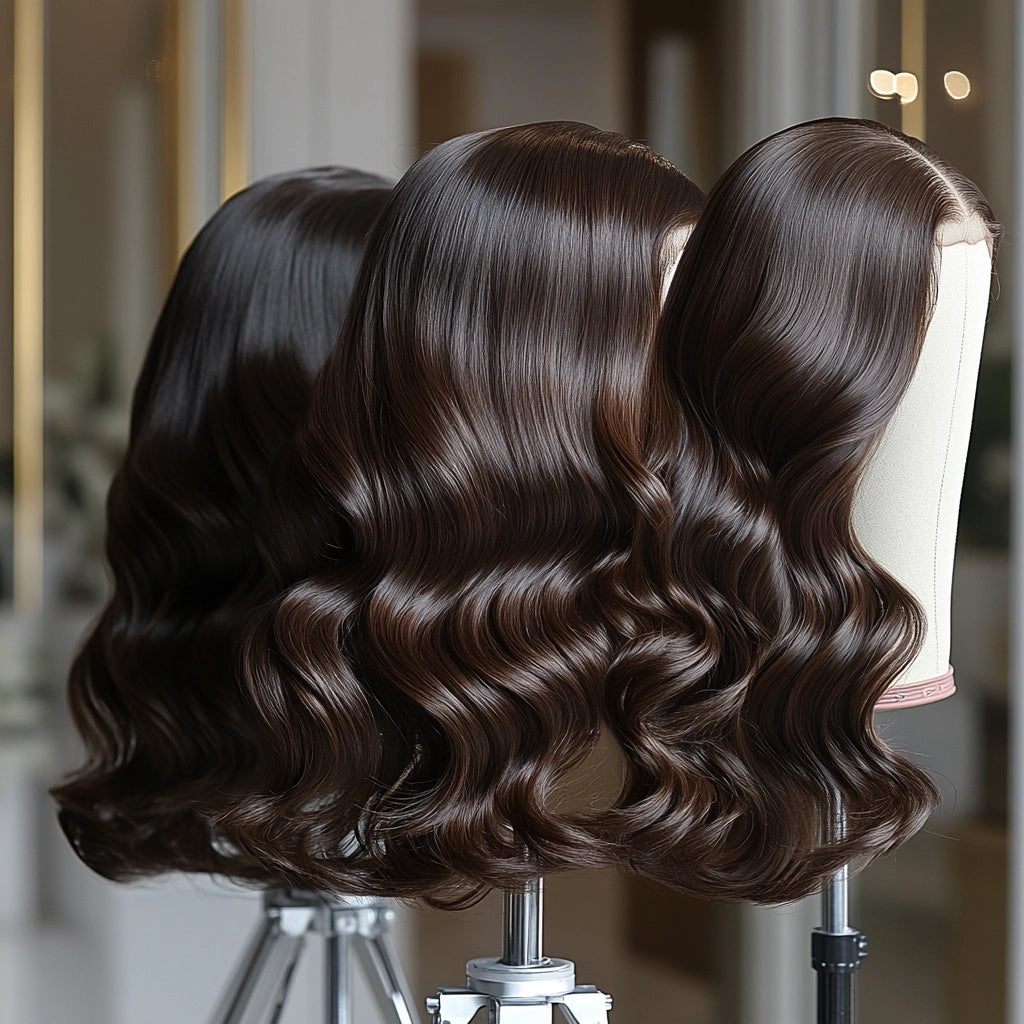
Factors That Impact Wig Prices: Quality, Material, and More
The wig industry plays a significant role in providing individuals with hair loss solutions, fashion enhancements, and cultural expression. With a market value projected to reach USD 10.3 billion by 2025, according to Allied Market Research, the pricing of wigs can vary dramatically, influenced by a myriad of factors. Understanding these factors is crucial for both consumers and industry stakeholders.
Quality of Wig Construction
The quality of wig construction significantly influences wig pricing. High-quality wigs typically feature hand-tied construction, allowing for a more natural movement and a realistic appearance. In contrast, machine-sewn wigs, which are less labor-intensive, often come with a lower price tag but may lack the nuanced aesthetics of their more expensive counterparts.
Material: Human Hair vs. Synthetic
Another critical determinant of wig price is the material used. Wigs made from human hair are often more expensive due to their natural look, longevity, and versatility. Human hair wigs can withstand heat styling, which is a significant advantage. Conversely, synthetic wigs, while less costly, offer convenience and a lower maintenance option, although they may not provide the same degree of natural appearance or lifespan.
Comparison of Human Hair and Synthetic Wigs
|
Factor |
Human Hair Wigs |
Synthetic Wigs |
|
Lifespan |
1-3 years (with proper care) |
3-6 months |
|
Heat Styling |
Possible |
Not recommended |
|
Cost |
Higher |
Lower |
|
Maintenance |
High |
Low |
Brand Reputation and Heritage
Consumers are often willing to pay a premium for wigs from reputable brands known for their quality and reliability. Brands with a robust heritage in producing excellent hair solutions leverage their reputation, impacting the price point of their products. Companies recognized for innovation in wig-making technology also command higher prices due to the perceived value offered through advanced features.
Wig Design and Style Complexity
The complexity of the wig design and the level of detail required in crafting influence costs. Wigs that include intricate details, bespoke fittings, or unique color patterns involve more labor and time in their production, thus, leading to higher pricing. This customization level often caters to celebrity demands or niche markets where individualization is paramount.
Production Scale and Manufacturing Location
Wigs manufactured in countries with higher labor costs, such as the United States and parts of Europe, generally show higher retail prices compared to those produced in countries with lower labor costs. Additionally, economies of scale influence pricing; larger productions tend to reduce costs per unit, allowing price adjustments that smaller producers can't afford.
Supply Chain and Distribution Channels
The wig supply chain, involving everything from raw material acquisition to the logistics of getting products to market, also plays a role in the final pricing. Complex supply chains consist of multiple intermediaries, each taking a margin, increasing end-user cost. Direct-to-consumer sales models or limited intermediary interference tend to offer lower pricing structures.
Technological Innovations
Advancements in wig-making technology can also impact pricing. State-of-the-art technology that improves comfort, fit, and realism can drive up the cost of production, often reflected in higher prices. These innovations benefit consumers seeking comfort and a natural appearance.
Seasonal and Trend Influence
The popularity of particular styles often varies with fashion trends, influenced by media, celebrities, and seasonal changes. Wigs that are currently trending might be priced higher due to increased demand. Seasonal variations, such as cooling benefits in summer wigs, also shift pricing according to consumer preferences.
Regulatory and Industry Standards
The regulatory environment and adherence to industry standards directly impact pricing strategies. Compliance with certifications ensures consumer safety and quality assurance, a factor considered in pricing. Products that meet or exceed stringent standards might be priced accordingly to justify the added security they provide.
Market Dynamics and External Economic Factors
Economic factors, including inflation, currency fluctuations, and alterations in consumer spending power, significantly influence wig prices. The industry must adapt to maintaining profitability while facing potential economic challenges, which may result in wig price variations.
Key Takeaways on Wig Pricing Factors
-
The construction quality directly influences price based on labor intensity and detail fidelity.
-
Material choice between human hair and synthetic plays a critical role in cost determination.
-
Brand reputation can substantiate higher price brackets.
-
Complex designs require more resources, increasing production costs.
-
Location and scale of production influence affordability.
-
Supply chain efficiencies or complexities contribute to final prices.
-
Technological advancements often lead to innovation-driven price adjustments.
-
Styles and seasonal patterns dictate market-driven price shifts.
-
Compliance with standards adds on assurance costs, increasing price.
FAQs on Wig Pricing
What are the main factors that affect wig prices?
Wig prices are affected by a range of factors including material quality, where human hair wigs are generally more expensive than synthetic wigs due to their realistic appearance and longevity. Additionally, the method of production (hand-tied vs. machine-sewn), brand reputation, complexity of design, production location, scale, and the presence of technological advancements contribute to costing. Other factors include supply chain logistics, market trends, regulatory compliance, and economic conditions.
How does material quality impact wig costs?
Material quality is one of the largest influencers of wig costs. Wigs made from high-quality human hair demand a higher price due to their realism, style versatility, and lifespan. They can sustain heat styling, providing a luxury option for consumers. Synthetic wigs, while more affordable, do not match the lifelike appearance and durability of human hair wigs, offering a budget-friendly alternative with some style and maintenance limitations.
Why does brand reputation matter in the pricing of wigs?
Brand reputation is crucial as consumers often associate well-known brands with a history of quality and reliability. Established brands can charge a premium for their products as they have invested in building trust and authority within the market. They are often also innovators who lead advancements in wig-making technology, offering unique features that justify the price point. Hence, customers are willing to pay more for a product backed by a respected brand.
Is wig pricing affected by seasonal trends?
Yes, wig pricing can be influenced by seasonal trends and fashion shifts. Throughout different times of the year or due to popular culture influences, demand for particular styles fluctuates. For example, lightweight, breathable wigs might be in higher demand during summer months, while styles trending due to celebrity influence or fashion shows can spike interest and consequently, pricing adjustments based on demand and supply. These trends dictate temporary price variations as they align with consumer preferences.
How can consumers ensure they are getting the best value for their wig purchase?
To ensure the best value, consumers should focus on the balance between cost and quality. It's important to verify material authenticity, especially for human hair wigs, and understand the construction method. Researching brand reputation and customer reviews can provide insight into product satisfaction and longevity. Additionally, looking for certifications that verify quality standards and engaging in thorough product comparisons will help in making informed decisions. Consumers should also consider factors like product warranties, returns policy, and customer service as part of their purchase criteria.
Conclusion
The complexities of wig pricing stem from a variety of factors including quality, materials, brand reputation, and industry dynamics; each plays a vital role in determining market prices. As the wig industry continues to evolve with technological advances and changing consumer demands, understanding these factors will remain critical for both consumers seeking value and producers aiming to remain competitive. For more information or to explore wig options, please visit www.nycmedicalwigs.com
Contact Us
For more information on our products and services, please feel free to visit New Jersey showroom at 347A Broadway Bayonne NJ 07002 or call us at 800 293-5613


